What is muscular endurance activities: Muscular endurance refers to a muscle’s capacity to work over a interval of time. Some exercises and tips might help you improve it, such as rising the number of reps you carry out.
Muscular endurance refers to the power of a given muscle to exert drive against a load, consistently and repetitivelyTrusted Source, over a interval of time. Exerting drive is also generally known as a contraction.
Muscular endurance performs a big role in many athletic endeavors. For instance, a runner does the same motion over and over once more. To keep away from injury or excessive fatigue, their muscle mass want to have an superior level of endurance.
That said, it’s not simply athletes that benefit from good muscular endurance. Many different situations require your muscle mass to perform nicely for a long time, such as walking up and down stairs carrying groceries.
Keep studying to be taught extra about why muscular endurance is important and 5 exercises to assist improve yours.
Table of Contents
Why is muscular endurance important?
Muscular endurance has been related to a number of health benefits. For instance:
- A 2014 studyTrusted Source found that larger levels of muscular endurance had been related to a decreased risk of cardiovascular disease and blood pressure, in addition to lower levels of triglycerides and serum blood sugar.
- A 2015 reviewTrusted Source means that improved muscular endurance could improve muscle blood circulation and mitochondria, which helps power your cells.
- A 2016 studyTrusted Source famous that muscular endurance could also be a good indicator of muscle health and your risk of mobility restrictions.
- A 2017 reviewTrusted Source found that greater levels of muscular endurance had been related to a lower risk of musculoskeletal accidents.
The American Council on Exercise (ACE) also means that muscular endurance may assist improve your:
- capacity to maintain a good posture for longer
- aerobic muscle capacity
- capacity to carry out each day duties
How to improve muscular endurance
Improving muscular endurance entails rising the whole time a muscle is contracted during an exercise.
According to the National Strength and Condition Association (NSCA), the everyday approach is to:
- lower the weight to 70% or much less of your 1 rep max
- increase the number of units to 3 or extra
- increase the number of repetitions (reps) to 10–25 per set
- shorten relaxation periods to 30 seconds or much less
So, if you happen to usually bench press for 3 units of 8–10 reps with 155 pounds (lbs), then you could change to 4 units of 15–25 reps at 100 lbs. As your muscular endurance improves, you possibly can progressively increase the weight while maintaining the same amount of reps.
Muscular endurance training makes use of a unique approach than strength training, which can appear to be:
- 6 reps per set
- a load of up to 85% of your 1 rep max
- 2–5 minutes relaxation between units
It’s important to note that the optimum number of units, reps, and relaxation could extensively fluctuate for every individual.
For instance, in a 2017 studyTrusted Source that aimed to test and improve the muscular endurance of cross-country skiers, the participants carried out 4 units of 30 reps with a 90-second relaxation between units. This relaxation interval is longer than 30 seconds. However, after 6 weeks, all participants confirmed a major improvement in their muscle endurance.
Another choice is to increase the amount of time you hold a contraction, generally known as isometric contractions.
A 2014 study found most improvements in belly endurance when holding a plank for as long as possible (or till failure) 5 or extra times per week.
Isometric contractions could also be a good choice to improve your muscle endurance if you happen to’re recovering from an injury. They put less stressTrusted Source on the buildings surrounding the working muscle mass.
Exercises for muscular endurance
Below are examples of 5 exercises that may allow you to improve your muscular endurance. They require no tools, and you are able to do them at home.
To see improvement, you’ll need to work on these exercises 2–3 timesTrusted Source per week, on non-consecutive days.
Remember, the objective is to carry out these exercises to failure so that you just improve your muscular endurance over time. That said, make sure to maintain correct kind to reduce the risk of injury.
Plank
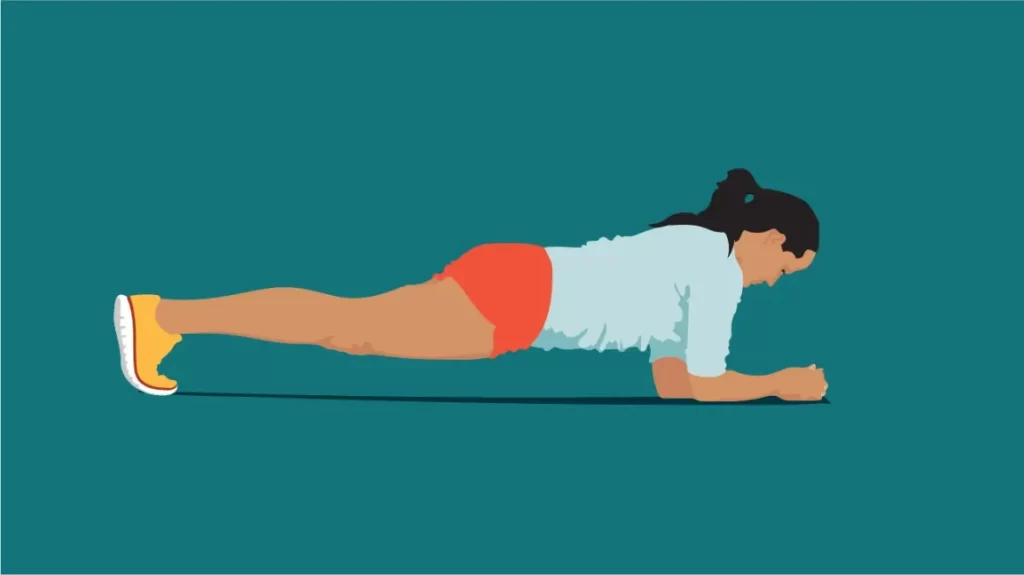
- Kneel on all fours, then place your forearms down on the ground. Step one leg again at a time till you’re in a straight line from head to heel, keeping your spine neutral.
- Engage your abs to assist the lower again. Imagine lifting your chest away out of your elbows but with no rounded backbone.
- Hold for as long as you possibly can, aiming for at the very least 30–45 seconds, then chill out. That completes one rep.
- Aim to do at the very least 3 units with 30–60 seconds of relaxation between every.
Tips: If you begin to lose kind (both your hips sag low or your buttocks begin to carry), then it’s a good time to relaxation before performing one other rep.
Body weight squats
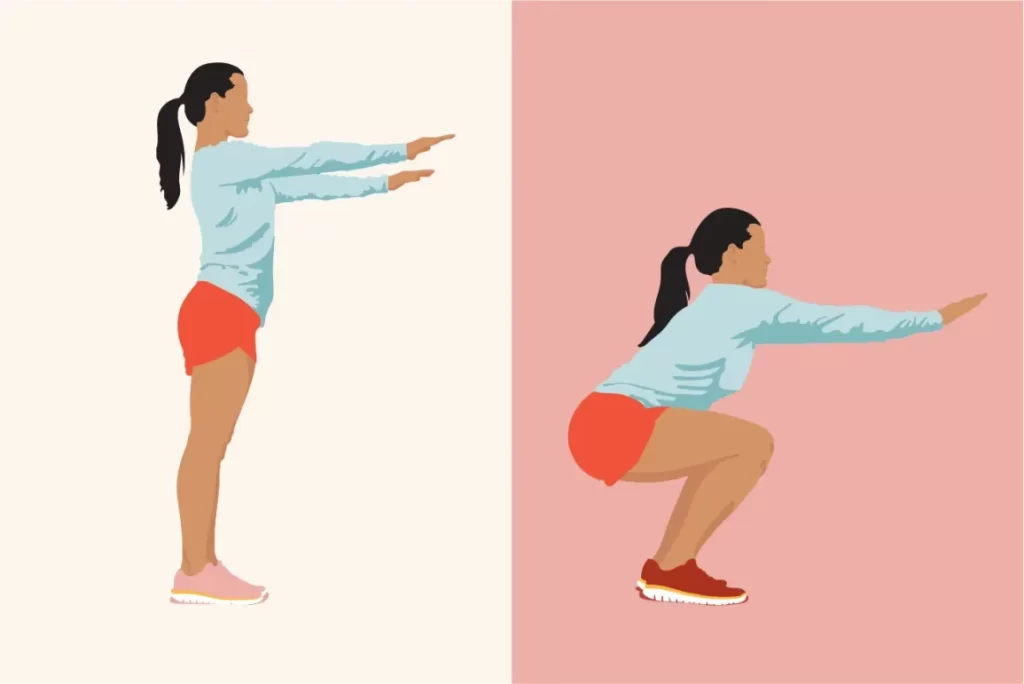
- Stand upright together with your ft positioned aside in a place barely wider than shoulder-width, together with your toes pointed straight forward.
- Bend your legs and sit again till your buttocks reach the height of your knees. Your thighs should be shut to parallel with the ground, and your knees should observe over your toes to prevent injury.
- Push your self upright, squeezing through your glutes on the way up.
- Perform 2–4 units of 25 reps. Adjust this rep number if you happen to really feel you are able to do extra squats on the finish of every set.
Tips: Maintain good kind by keeping your head up, chest lifted, and shoulders again. Don’t let your torso develop into parallel with the ground.
There are many squat variations which you can try to assist goal completely different parts of your legs.
Walking lunges
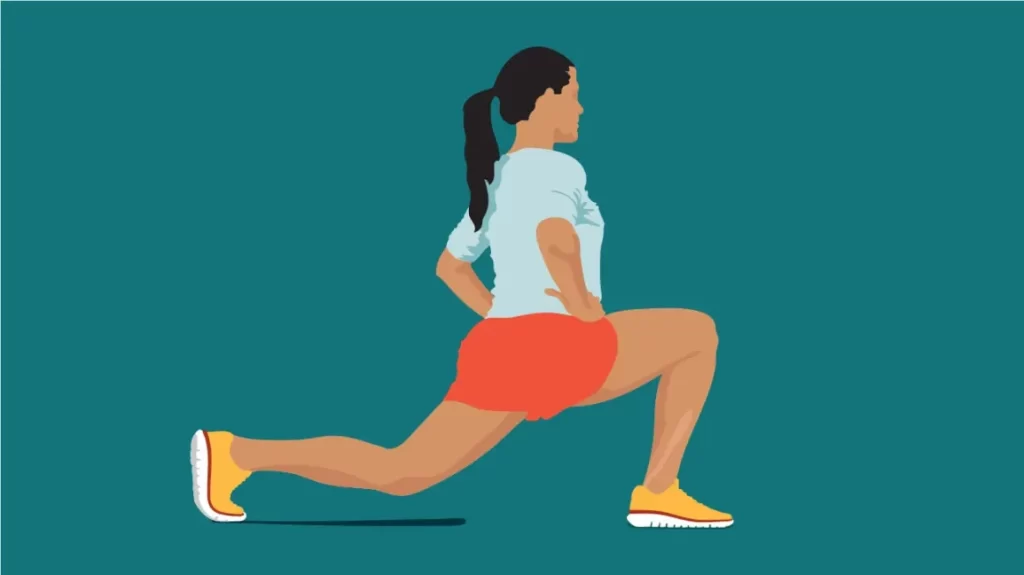
- Stand upright together with your ft shoulder-width aside.
- With your proper leg, take a large step ahead, then lower your body down in order that your again knee both touches or comes shut to touching the ground.
- Push down through your entrance foot and stand again up.
- Repeat the same movement together with your left leg.
- Perform 2–4 units of 30 walking lunges (15 on every leg, per set).
Tips: Keep your trunk upright as you carry out this. As you lower your body, your lead knee should observe in line together with your shoelaces and your shoulders should be behind your toes.
Pushups

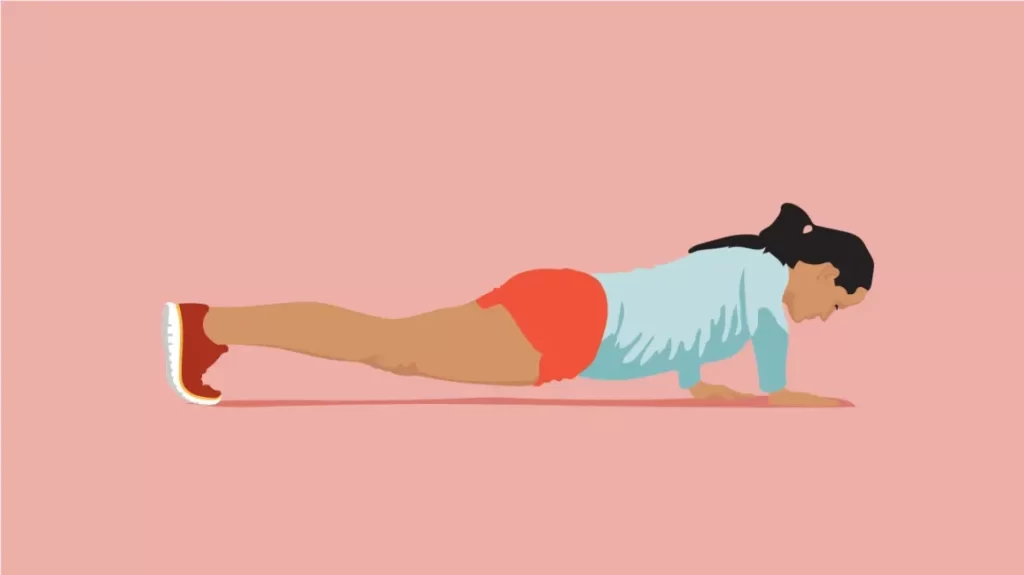
- Begin in a full plank place together with your arms barely outside shoulder width and instantly under your shoulders. Hold your body up together with your toes and together with your arms (not your forearms, as with the plank described above). Keep your backbone in neutral, and try not to let your hips sag.
- Lower your self down by bending your elbows at a 45-degree angle, aiming your chest to the ground.
- Promptly push down in your palms, and elevate your body again to a plank place.
- Perform 5 units of 15 reps (alter as wanted).
Tip: If this motion is too superior for you, begin together with your weight in your knees instead of your toes, or start with a wall pushup.
Crunches
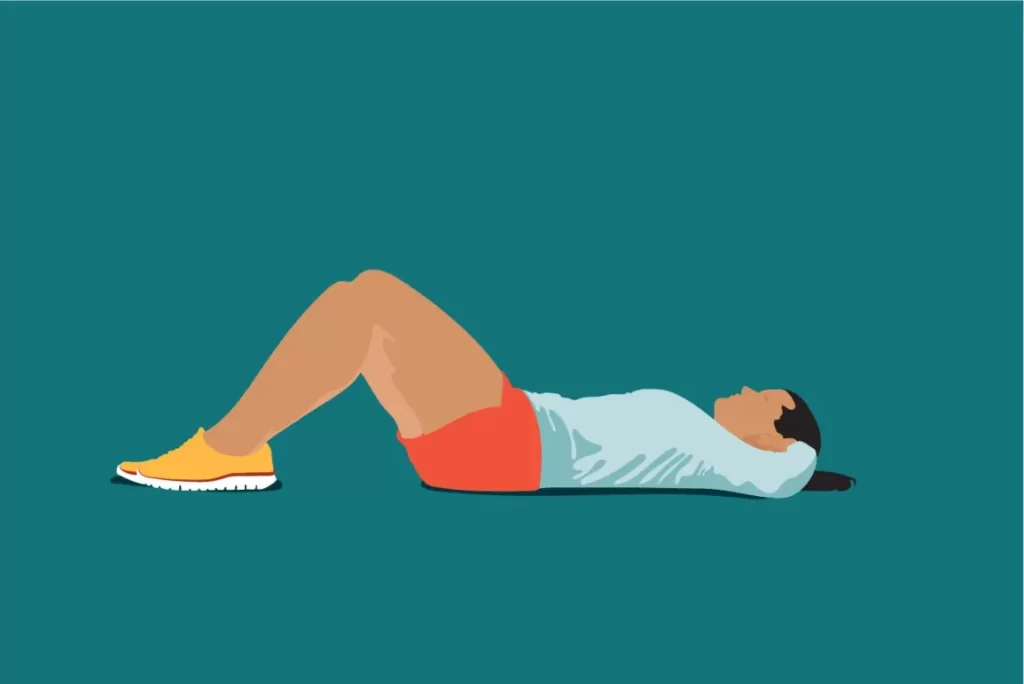
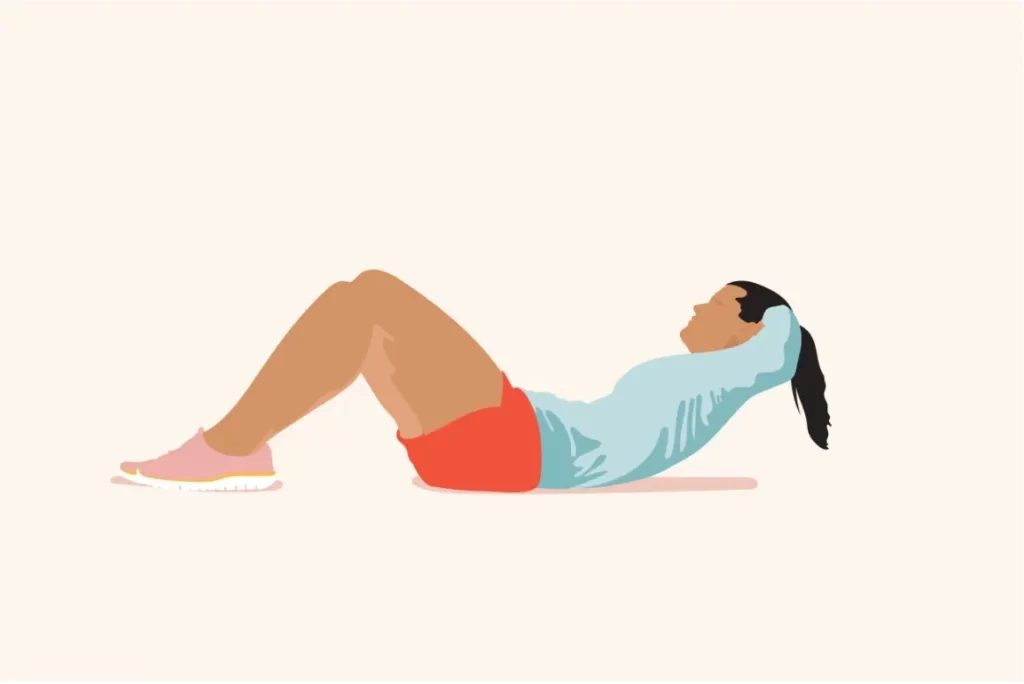
- Lie flat in your again, together with your legs bent and your ft flat on the ground. Place your arms evenly behind your head to assist your neck, together with your elbows out to the perimeters.
- Engage your abs and curl your torso up, lifting your higher again and shoulders off the ground. Keep your elbows out to the perimeters relatively than curling them round your head. Resist the urge to use momentum, relatively than your muscle mass, to deliver your body up. Keep a golf ball-sized house between your chin and chest.
- Guide your body down in a managed movement to maximize your muscle use.
- Perform 5 units of 25 reps.
Tips: Don’t pull your neck or head together with your arms. The work should come out of your abs.
Talk with a doctor
It’s at all times a good concept to discuss with a doctor before beginning any exercise program, especially if you happen to haven’t exercised in a while.
You could also need to seek the advice of a physical therapist or certified private coach if you happen to’re new to working out. They can provide you steering on different exercises which may work nicely for you and make options for methods to prevent injury while working out.
Frequently requested questions
What are examples of muscular endurance?
Muscular endurance includes rising the amount of units and reps while reducing relaxation periods. If you often squat for 3 units of 6–8 reps with 150 lbs and a 120-second relaxation, then you possibly can change to 4 units of 15–25 reps at 90 lbs with a 45-second relaxation.
Why do you do muscular endurance?
There are many benefits to muscular endurance training, including:
- reducing your risk of some health conditions
- improving blood circulation
- rising mobility and posture
- reducing your risk of accidents
Takeaway (What is muscular endurance activities)
Muscular endurance is an important part of common health. It’s important for perform and for reducing your risk of injury and certain chronic conditions.
Muscular endurance training entails rising the amount of time a muscle is under contraction. This could be done with increased reps or isometric hold times.
If it’s a departure out of your typical exercise routine, give muscular endurance training a try and see what the increased problem can do for you.
- Read more: Can I lose 10 pounds in one month?
- Read more: Is it bad to want to lose weight fast?
- Read more: 9 health benefits of vegetables legumes and beans
- Read more: 6 Best candy for weight loss – Science based
Pros:
- Improved Stamina: Muscular endurance activities like jogging, cycling, or even doing a hundred squats in a row can make you feel like you can outlast a marathon-walking sloth!
- Toned Muscles: Say hello to those lean, mean muscles! Muscular endurance exercises help sculpt your body into a masterpiece, ready to be displayed at the Louvre… or just at the beach.
- Increased Performance: Whether you’re aiming to beat your own record or impressing friends with your arm-wrestling skills, muscular endurance training can give you the edge you need.
- Better Posture: Goodbye, slouching! With stronger muscles, you’ll stand tall like a giraffe with a neck made of steel beams. Well, maybe not that tall, but you get the idea.
- Heart Health: Pump, pump, pump it up! Muscular endurance activities get your heart racing faster than a cat chasing a laser pointer, which is great for cardiovascular health.
- Weight Management: Want to shed those extra pounds? Muscular endurance workouts can help burn calories faster than a squirrel storing nuts for winter.
- Functional Strength: Need to carry groceries up five flights of stairs? No problem! Muscular endurance exercises build the kind of strength that comes in handy in everyday tasks. Who needs a forklift when you’ve got biceps like these?
Cons:
- Time-Consuming: Let’s face it, ain’t nobody got time for endless reps when there’s a new season of your favorite show to binge-watch. Muscular endurance activities can be a bit of a time hog.
- Boredom: Doing the same exercise over and over again can be as thrilling as watching paint dry. Variety is the spice of life, but sometimes it feels more like the parsley of workouts.
- Injury Risk: Pushing your muscles to the limit can sometimes lead to strains and sprains. Ain’t nobody got time for a trip to the doctor’s office!
- Plateauing: Ever feel like you’re running on a hamster wheel, going nowhere fast? Muscular endurance training can sometimes hit a plateau, leaving you feeling as stuck as a sloth in molasses.
- Muscle Fatigue: Ever tried to lift a heavy box after leg day? Yeah, not fun. Muscular endurance activities can leave your muscles feeling as wobbly as a newborn giraffe.
- Overtraining: It’s easy to get carried away with all those reps and sets, but overtraining can lead to burnout faster than a candle in a wind tunnel.
- Not for Everyone: Let’s be real, not everyone is cut out for endless lunges and squats. Some folks would rather cozy up with a bag of chips than hit the gym, and that’s perfectly okay!
People also ask:
What is the activity of muscular endurance?
Muscular endurance is like a marathon for your muscles! It’s all about their ability to keep going and going, like the Energizer Bunny on a caffeine high. Picture yourself doing squats, push-ups, or holding a plank until your arms feel like spaghetti. It’s not just about lifting heavy weights once – it’s about doing it over and over again until your muscles scream for mercy. Think of it as training your muscles to be the ultimate workaholics, ready to tackle any task with gusto. So grab those dumbbells and get ready to feel the burn – your muscles will thank you later! Endurance, activate!
What does muscular endurance mean?
Muscular endurance is like your muscles’ version of a never-ending game of tag – they just keep going and going! It’s all about their ability to withstand the test of time, like a sturdy oak tree in a storm. Imagine doing countless repetitions of exercises like squats, lunges, or even lifting weights until your arms feel like limp noodles. It’s not just about strength – it’s about staying power, like the Little Engine That Could of the fitness world. So lace up those sneakers, grab your water bottle, and get ready to show those muscles who’s boss – endurance mode: activated!
What is muscular endurance training method?
Muscular endurance training is like giving your muscles a crash course in long-distance running – they learn to keep pushing through the pain! It involves doing multiple repetitions of exercises, like squats, push-ups, or lifting lighter weights for higher reps, until you’re sweating more than a pig at a barbecue. It’s not about lifting the heaviest thing you can find – it’s about teaching your muscles to keep going, like a stubborn toddler who refuses to take a nap. So grab your workout gear, channel your inner marathoner, and get ready to outlast even the most determined squirrel in a nut-collecting contest. Endurance training: engage!
